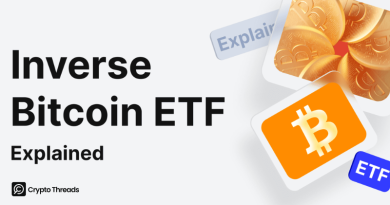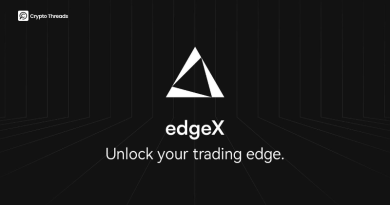Consensus Mechanisms: The Backbone of Decentralized Blockchain Networks
Behind every functioning blockchain lies a powerful invisible force: its consensus mechanism. This core component enables thousands of independent nodes to agree on a shared truth, without needing a central authority.
In this in-depth guide, we’ll explore what consensus mechanisms are, how they protect decentralized systems, and the strengths and trade-offs of the ten most prominent algorithms powering blockchain networks today.
What Is a Consensus Mechanism?
Blockchains operate without centralized servers or trusted third parties. Instead, they rely on a consensus mechanism, a set of protocols that allows all participants to reach agreement on the legitimacy of transactions.
Different consensus mechanisms outline how the network validates activity, selects new blocks, and maintains overall security. By doing so, they ensure the blockchain remains tamper-resistant, transparent, and efficient without relying on intermediaries.
Whether through energy-intensive mining or low-impact staking, the choice of consensus influences performance, scalability, user incentives, and environmental sustainability.
Top 10 Blockchain Consensus Mechanisms
Different consensus mechanisms prioritize different values—some focus on decentralization, others on speed or sustainability. Below are the ten most widely adopted consensus algorithms, explained with real-world context and data to help you understand how they work in practice.
1. Proof of Work (PoW)
PoW is one of the earliest forms of consensus algorithms. The mechanism was coined in the early 1990s, but not until 2009 was it employed for digital currencies by Satoshi Nakamoto for the Bitcoin network.
This type of consensus works through a process called “mining”, which is based on game theory. Miners must compete against each other in solving high-level puzzles to validate new nodes. Winners will receive the blockchain’s native coin as rewards for their dedication. Here is a simple illustration to explain how Proof of Work works:
Although highly secure and decentralized, PoW comes at a steep environmental cost. According to the University of Cambridge, Bitcoin’s energy consumption reached over 130 terawatt-hours per year, more than entire nations like Sweden.
- Used by: Bitcoin, Litecoin, Dogecoin
- Key trade-off: High security, but low efficiency (~7 transactions per second) and high energy use.
2. Proof of Stake (PoS)
Proof of Stake replaces energy consumption with economic commitment. Instead of mining, validators secure the network by locking up (staking) tokens. The more they stake, the higher their chances of being chosen to validate the next block.
Basically, Proof of Stake works as follows:
- Token staking: Users who want to be a ‘node’ in the validation process must possess a minimum number of the blockchain’s native tokens. This number varies across different blockchain (e.g., Ethereum requires at least 32 ETH).
- Node selecting: A random number of nodes will be selected to participate in the consensus process. Chosen nodes must meet criteria about the number of tokens owned and must comply with stringent computing and security rules.
- Transaction validating: Chosen nodes verify transactions on the network. Once transactions are verified, nodes add these transactions into the newly created blocks.
- Block creating: After all nodes have reached a consensus about a transaction, they altogether create a new block. Staked tokens are now used to calculate the reward sharing ratio among nodes (you might want to think of dividends in a company)
- Blockchain updating: The new block will be updated on chain, and all nodes in the system will be notified.
- Rewards distributing: Nodes participating in the consensus process receive a portion of the transaction’s fees as their reward.
Ethereum’s 2022 transition to PoS resulted in a 99.95% drop in energy use, according to the Ethereum Foundation, while enabling significantly higher throughput via Layer 2 solutions.
- Used by: Ethereum, Cardano, Tezos, Solana
- Real-world note: Ethereum’s post-Merge staking ecosystem now secures over $100 billion in assets.
3. Delegated Proof of Stake (DPoS)
DPoS is a more democratic version of PoS. Token holders vote to elect a small number of delegates to produce blocks and validate transactions on their behalf. This structure reduces network congestion and increases speed.
However, DPoS can sacrifice decentralization. EOS, which uses this model, is often cited for its high throughput (over 4,000 TPS) but limited validator set (21 block producers).
- Used by: Lisk (LSK), EOS.IO (EOS), Steem (STEEM), BitShares (BTS), and Ark (ARK).
- Key advantage: Scalable and fast, but with more centralized governance.
4. Practical Byzantine Fault Tolerance (pBFT)
pBFT was designed to withstand node failures and malicious activity. It allows consensus as long as at least two-thirds of nodes behave honestly, making it well-suited for enterprise or permissioned blockchains.
The Byzantine Generals Problem highlights the difficulty of achieving consensus in a network with potentially disloyal participants. The practical Byzantine Fault Tolerance (pBFT) consensus mechanism addresses this by ensuring security and reaching consensus when at least two-thirds of the nodes are honest. Prominent blockchains like Hyperledger Fabric utilise pBFT for its robust security features.
However, pBFT’s security is compromised if more than one-third of the nodes are dishonest. In pBFT, nodes are categorised into primary and secondary nodes. Primary nodes act as leaders, while secondary nodes serve as backups. The primary node rotates with each consensus round to maintain integrity and fairness in the network.
Because of its low latency and high reliability, pBFT is often used in combination with other consensus systems to boost scalability.
- Used by: Hyperledger Fabric, Zilliqa
- Performance highlight: Zilliqa’s hybrid model using pBFT has achieved 2,800+ TPS in test environments.
5. Proof of Weight (PoWeight)
Six MIT researchers developed a consensus for the Algorand blockchain with the prime motivation of discovering an algorithm model that solves the Byzantine Generals’ Problem. They discovered a consensus algorithm based on weight fraction and named it Proof of Weight.
Proof of Weight is a generalization of PoS. Instead of relying solely on token holdings, a participant’s “weight” could include storage capacity, activity level, or reputation.
This makes it more adaptable for use cases beyond financial validation, like decentralized storage or compute networks.
- Used by: Algorand, Filecoin, Chia
- Case in point: Filecoin uses PoWeight based on both token stake and the amount of verifiable storage provided.
6. Proof of Capacity (PoC) / Proof of Space
PoC is an energy-efficient alternative to PoW that relies on disk space rather than CPU power. Miners precompute and store solutions, called “plots”, on their hard drives. More space means higher chances of winning the next block.
This model opens up mining to users with excess storage rather than expensive GPUs or ASICs.
- Used by: Chia, Burstcoin
- Fact: In 2021, Chia’s network reached 35 exabytes of capacity—over 10× larger than all Netflix servers combined.
7. Proof of Authority (PoA)
PoA grants block production rights to a limited number of approved validators. These are typically known entities, chosen based on their real-world identity and reputation. The model is ideal for private or consortium blockchains that prioritize speed and control over decentralization.
In this system, a group of validators are pre-approved in a vetting process including a real-life identity check. After all validators are ascertained, they need to stake a certain amount of assets as a sign of commitment.
When a transaction is ordered, validators will vote to decide whether that transaction is eligible or not. If most of the committee agrees on the verification, the transaction is approved, and a new block is added to the chain. In PoA, validators will bet their reputation and coins in the verification process. If they play foul, they will be disqualified forever.
- Used by: VeChain, Ethereum Kovan Testnet
- Enterprise use case: VeChain’s PoA network is used by Walmart China to trace supply chain data for food safety.
8. Proof of Importance (PoI)
Developed by the NEM blockchain, PoI factors in more than just token stake. It also considers how active a user is and how they interact with others in the network.
This approach promotes genuine network engagement and discourages passive holding. Proof of Importance goes beyond choosing validators based on staking. The algorithm rates a node based on 3 factors:
- How much is in an account?
- How often does the account transact with others within the protocol?
- What was the volume of each transaction?
These three questions answer how important a node will be in the blockchain. If a node is more important than others, it has more chances to be chosen as a validator.
- Used by: NEM
- Scoring model: Importance is calculated based on stake, transaction frequency, and connection strength with other nodes.
9. Proof of Burn (PoB)
PoB asks users to “burn” coins—send them to an address that no one controls. The word ‘burn’ simply means destroy. When you ‘burn’ coins, you send them to an ‘eater address’ where they cannot be recovered. Unlike staking, coins in the burning process are irretrievable. Users must sacrifice short-term wealth to gain the lifetime privilege of being a validator.
This model introduces economic scarcity while avoiding energy waste.
- Used by: Slimcoin, Counterparty
- Economic function: PoB mimics PoW’s sacrifice model, but the cost is in coin value rather than electricity.
10. Proof of History (PoH)
Solana’s Proof of History adds a time-based layer to blockchain consensus. Every transaction receives a cryptographic timestamp, creating a verifiable order of events. This eliminates delays caused by network-wide synchronization.
It is noteworthy that this method is not a standalone protocol but is used in conjunction with another consensus mechanism. Typically, PoH operates alongside a Proof of Work or Proof of Stake system as part of a hybrid consensus algorithm.
- Used by: Solana
- Speed milestone: Solana claims peak performance of 65,000 TPS, with average block finality under 500 milliseconds.
Consensus Models Compared
The table below provides a high-level comparison of the ten consensus mechanisms covered above. It breaks down how each model performs across four core dimensions: energy use, transaction speed, level of decentralization, and real-world usage. This snapshot can help developers, investors, and researchers quickly assess which algorithm best suits their needs.
| Consensus | Energy Use | Speed | Decentralization | Common Usage |
| Proof of Work | Very High | Low (~7 TPS) | Very High | Bitcoin, Litecoin |
| Proof of Stake | Low | Medium | High | Ethereum, Cardano |
| Delegated PoS | Very Low | High | Medium | EOS, Lisk |
| pBFT | Low | Very High | Low | Hyperledger, Zilliqa |
| PoWeight | Low | High | High | Algorand, Filecoin |
| PoC | Low | Medium | Medium | Chia, Burstcoin |
| PoA | Very Low | Very High | Low | VeChain |
| PoI | Low | Medium | High | NEM |
| PoB | Low | Medium | Medium | Slimcoin |
| PoH | Very Low | Extremely High | High | Solana |
Each consensus mechanism serves a different purpose. Some emphasize trustlessness and decentralization, while others prioritize speed, energy efficiency, or ease of governance. Choosing the right model depends on a blockchain’s goals, whether it’s powering a decentralized currency, enabling enterprise applications, or scaling a Web3 ecosystem.
Final Thoughts: Why Consensus Design Matters
A blockchain’s consensus mechanism isn’t merely a technical component. It reflects the underlying philosophy of the network, determining how decisions are made, how authority is distributed, and how the system adapts under pressure. Its design affects transaction efficiency, network participation, developer engagement, and overall scalability.
Over the years of blockchain evolution, consensus has emerged as the quiet force shaping the success or stagnation of entire ecosystems. It influences governance models, economic incentives, and even user behavior. When thoughtfully implemented, it opens the door to innovation and long-term sustainability. When poorly aligned, it risks creating friction, centralization, or technical bottlenecks.
For developers, investors, and anyone serious about understanding decentralized technologies, consensus is more than background architecture; it is a strategic cornerstone. In these systems, trust is not handed down from institutions. It is created through transparent rules, active participation, and verifiable outcomes. At the center of that process stands one concept: consensus.



